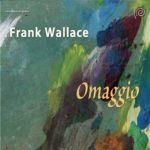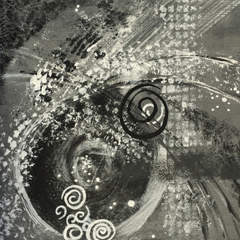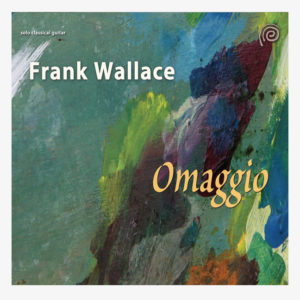Five Short Pieces now published
Fünf Kleine Stücke (Five Short Pieces) is my most recent composition, now for sale, click here to purchase a PDF download. I recently paid a visit to my friend Aaron Green where I had the opportunity to play four different Hauser guitars from 1931, 1941 and two from 1959. The 1939 Aaron recently had was sold and not available as the fifth, so we used one of Aaron’s recent guitars which was inspired by the Llobet model of early Hausers. Read more below about my conception and the birth of this new work.
Fünf Kleine Stücke was written for Dr. Daniel Pewsner in thanks for many favors and good friendship. Also for my new found love of Switzerland and its many graces and lovely medieval towns, such as Basel, Bern and Solothurn.
Fünf Kleine Stücke
I. Sequenz I
II. Basel, 1298
III. Lindenberg, 2017
IV. Durch den Rhein
V. Sequenz II
My wife Nancy and I were on vacation in Basel, Switzerland and I had borrowed a beautiful guitar belonging to Dani. It, and the gorgeous 14th and 15th century surroundings, inspired me to do more more than a little technique maintenance while trying to relax (not my forte!). Composing does relax me, and so it went: a morning coffee, a few warmups, then composing, lunch with Nancy at an intimate downtown cafe, then off to a museum, walking the beautiful streets of Basel to get there. On those walks we continually looked for the earliest date above a medieval doorway – the winner, 1298. Thus the title of #2 – Basel, 1298, with appropriate harmonies to that time, many parallel fourths and a spacious flow reminiscent of the long and luxurious reverberation of tones in an all-stone cathedral or chapel.
My dedication of #4 to José Sanchez (another guitarist/friend residing in Bern who possesses perhaps the most beautiful tone I have ever heard!) is based on a trip we took twice to a country chapel on the outskirts of the exquisite town of Solothurn. José grew up near there and had recollections of discovering this magical place some 30 years before – all the while it sat in his memory. I was touched that I was visiting when it occurred to him to take me and Dani there to share his experience. The memory was good – the all stone acoustics were amazing and we soaked up the vibrations in joy and wonderment. On the first visit, a somewhat elderly woman with few teeth, thin, but strong in appearance, entered and asked if we could be quiet for a few moments. Abiding her request, she disappeared into a crypt behind the alter. Our eyes gazed in question at each other upon hearing the bass tones that emerged – wasn’t that a woman? Our question was soon answered by the next phrase that leapt two octaves and more. And so the questions and answers bounced off the walls, floor and ceiling of hard stone. We did ask what language, as she emerged, “my own, they are sounds that come to me.” And the music? “The same – it comes.” She departed, as mysteriously as she had entered, and left us aghast.
The five works are conceived as studies, tone poems they might be called. The prime purpose of any study is to achieve the maximum resonance of the guitar with beautiful tone in any technical circumstance. So a study takes a particular pattern and repeats it a bit more than normal. The several problems presented here are: scales with slurs, thus the two “Sequenz,” or sequences, that are inspired by the medieval form, and feature long scales with slurs, slurs that need to be incorporated into the flow, or pattern, with strength, clarity and fluidity; Basel, 1298 and the following Lindenberg, 2017 (the street on which these works were composed) focus on im chords, two note intervals, that span all six strings, demanding the right wrist be fluid and accommodate all strings so that the tone remains consistent (though variable as dictated by musical demands or inspiration); and the third major focus is simply melody and accompaniment, though in #4, Durch den Rhein, the melody constantly shifts between bass and soprano.
On this last point, I would comment that I have a rule that is essential to my particular style of playing: ALL melodies should be played rest stroke. Now, you may immediately react, “how old fashioned!” But I would have you pause for two seconds and reconsider. Every rule MUST be broken, so I by no means ever achieve this goal. But, even if it is totally impossible or impractical to play a note rest stroke. it is crucial that you try, that you practice it this way. Why? To get that lovely rich sound in your ear. If the ultimate decision is to play free stroke, you have been informed by the attempted execution of rest stroke, and your ear has been infected by that sound. You may want the melody to be soft and wispy, slightly or emphatically ponticello, where rest stroke feels to heavy and punchy. Great – do it. But I have witnessed too many great guitarists playing the opening phrase of Villa-Lobos Prelude #1 free stroke – it sounds weak – it can never achieve that full cello like quality that must be used. Imagine a cellist bowing across the string without wanting to press the string too hard! Shifting between rest stroke thumb and rest stroke finger demands flexibility of approach, particularly in the wrist, but also demands sensitivity in the fingertip/nail connection and arc of the fingers.
Enjoy!
Copyright ©2017 Frank A. Wallace
Cover photography and design by Nancy Knowles
All rights reserved.


